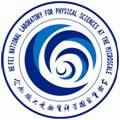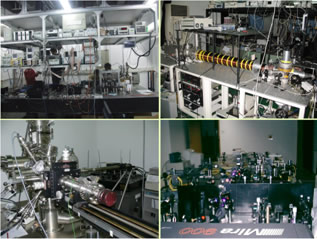 |
HefeiNational Laboratory for Physical Sciences at the Microscale (HFNL) |
|---|

The establishment of the Hefei National Laboratory for Physical Sciences at the Microscale (HFNL) was formally approved by the Ministry of Science and Technology (MOST) of the People’s Republic of China in November 2003. It takes the character of a multi-disciplinary intersection and is guided by a national significant strategic demand and the frontiers of basic research fields in interdisciplinary science. The disciplinary fields of HNFL involve physics, chemistry, materials, biology, and information, and realize the large-span intersection among these five first-level disciplines.

The HFNL has already established seven research divisions and one public center of instrumentation and support facilities. The former include a division of atomic and molecular sciences, a division of nano-materials and nano-chemistry, a division of low-dimensional physics and chemistry, a division of quantum physics and quantum information, a division of structure and function of biomacromolecules, a division of Bio-X interdisciplinary sciences, and a division of theoretical and computational sciences; the latter includes a physics and chemistry analysis laboratory, a biological techniques laboratory, a low-temperature & strong magnetic field laboratory, and a micro-nanofabrication laboratory.
At present, the HFNL has 153 researchers and staff. Among the more than 90 researchers, there are 5 creative research groups from the National Natural Science Foundation of China (NSFC) and 4 innovation teams from the Ministry of Education (MOE), 7 academicians from the Chinese Academy of Sciences (CAS), 25 Distinguished Young Scholars sponsored by the NSFC, 10 "Cheung Kong" Scholars of the MOE, 10 chief scientists of the science megaprojects, and 36 "One Hundred Talented People"; winners of the CAS.
In 2006, the HFNL was selected as one of the research bases of the "Quantum research" national science megaproject. Subsequently, it has led and undertaken 10 megaprojects covering all four national science megaprojects, which are "Quantum research", "Nanoscience and nanotechnology", "Protein science", and "Development and reproductive biology". It has also undertaken two projects of the National Basic Research Program of China (973) in the fields of protein science and clear energy.

From its establishment, the HFNL obtained a series of great achievements continuously in wider research fields such as quantum physics and quantum communication, single molecular science, nanomaterials and nanodevices, high-temperature superconducting physics, and life science. It has won the State Natural Science Prize (second prize) twice, the international "Top Physics Stories" four times, the "Top Ten State Science and Technology Progresses in China" six times consecutively, the “Top Ten State Science and Technology Progresses in the World” once, and "Breakthrough of the Year" by the Journal of Science once. Moreover, its research work was selected to be among the “Top Ten News in State Basic Research in China” four times. Some achievements of the HFNL were also exhibited as significant innovative achievements in science and technology in China. Even though the HFNL is young, with its many distinguished achievements, it has gained academic prestige in the world.
See: http://www.hfnl.ustc.edu.cn